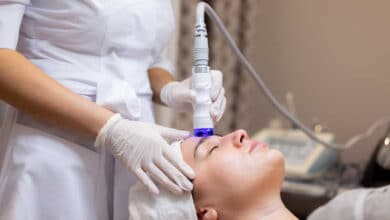How Can Medical Establishments Improve the Quality of Healthcare?

Many hospitals want to offer value-based medical services and patient-centered care that leads to effective treatment outcomes, reduced readmissions, and happier patients. Hospitals can prioritize and improve patient care by doing the following:
Creating great patient-friendly spaces
All hospitals must provide hygienic facilities with uninterrupted power and water supply, clean sanitation, and sufficient waste disposal mechanisms. Additionally, the hospitals must have adequate spacing in all their areas to allow social distancing, prevent the spreading of infections, and enable seamless services to be conducted without disrupting patients’ privacy.
Furthermore, the hospitals must have an adequate stock of drugs and medicines, clinical supplies, and also equipment such as ventilators, masks, and disinfectants.
Offering staff training and motivation
Every hospital department should have competent and well-trained staff to handle the expected workload. Many employees face challenges in providing quality care because they are inadequately trained, have low self-esteem, get low compensation and benefits, and have poor motivation. Therefore, hospitals can offer value-based healthcare by addressing these issues by focusing on proper staffing, employee training, and human resource management so that employees can be rewarded and encouraged to scrupulously maintain healthcare ethics.
Focusing on proper communication and research
The hospital management must adopt proper communication mechanisms with all the employees. This ensures that all the employees are clear with the hospital’s mission, vision, and goals so they can execute their tasks the right way. Hospitals should also set enough funds aside for conducting research and online engagements to remain updated on the latest healthcare trends, patient responses, and preferences.
Moreover, medical professionals must have clear and empathetic communication skills. When there is good communication between medical practitioners and their patients, the patients are more likely to follow their doctor’s advice and make informed choices regarding their health in the future. Effective communication between employees reduces the chances of misdiagnosis, errors, and gaps in information. Since the care of one patient requires a team effort, all practitioners involved must practice active listening, detailed record-keeping, and address questions in order to get a positive treatment outcome. Proper NDIS compliance will ensure that medical establishments are following all regulations in regard to handling patient documentation and the proper care practices to be taken with regard to staff communication, training, and operational safety.
Investing in advanced and cutting-edge technology
Facilities need to have up-to-date tools for record-keeping and diagnoses because medical practitioners need to make many accurate and quick decisions about patient care. Since they can’t afford to make false diagnoses and record disorganized information, they need to have access to the right equipment to deal with the patient’s needs. The equipment will not only allow the doctors to provide high-quality medical practitioners, but it will also make your facility gain patient trust and recognition. One of the tools they can use is aesthetic management solutions. With the right technology and software, you can get a much clearer picture of your clinic’s operational productivity, revenue, and patient behavior at a glance with scheduled and on-the-fly reports.
Working with patient advocates
Patient advocates can be hospital staff or people who are hired through other agencies. They are individuals who support patients throughout their treatment by listening to them and encouraging them. Since patient advocates can connect with the patients in a way that other medical practitioners cannot, they can provide useful insight into creating and refining a patient’s treatment plan.
Conclusion
Medical establishments can improve the quality of care they offer to patients by working with patient advocates, using cutting-edge technology, improving internal communication, offering staff training and motivation, and creating conducive patient-friendly spaces.






